Pop quiz. Which of these do you agree with?
- An event in history is remembered because of the emotions that are centered around it.
- An event in history is remembered because of the specific details that took place.
- An event in history is remembered because it is an isolated incident.
- Events in history are over-discussed and just need to be left in the past.
If your answer was either of the first two choices, you are on the right track. Many people do not think about the ramifications of the past and believe that what happened in the past stays in the past. However, it is crucial to know so we can change the course of our history and make sure we don’t repeat those same mistakes.
In middle school, children across America learn about the most infamous event in history- the Holocaust. When I mention the Holocaust, there are two things that immediately come to mind, Adolf Hitler, and the concentration camps. This era in history is taught in history class as a way to discuss how people of different races and religions were marginalized and depicted as monsters, even when they were just as innocent as you and I. One cultural product created to illustrate the events of the Holocaust is The Boy in the Striped Pajamas. While I never read the book until recently, the movie was shown in my eighth grade history class. To be blunt, we only watched it to fill time we had in class because it was the end of the year and we ran out of material- but that is what happens to such events. They are briefly discussed and are never thought about again. However, the genocide of a specific religion, it deserves a little more air time.
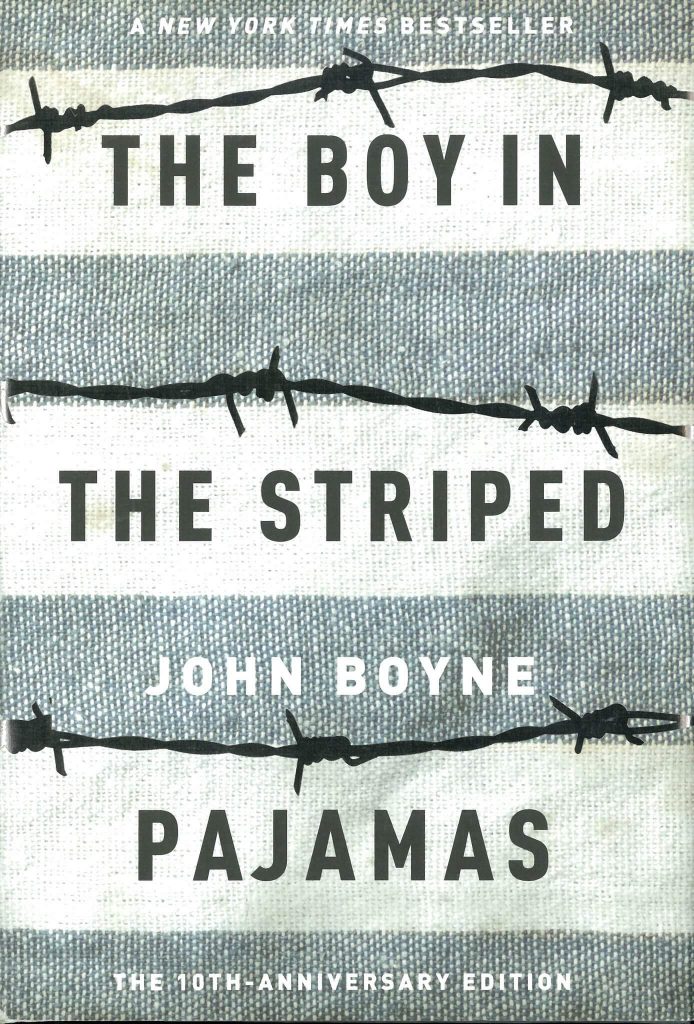
In the novel The Boy in the Striped Pajamas, John Boyne creates a universe centered around a young boy named Bruno, who has moved with his family to Auschwitz due to his father’s new promotion as Commandant to Hitler’s cause. The book follows Bruno as he navigates his new environment and attempts to understand the political climate of his world. People who have read the book or watched the film adaptation believe that it is a true story based on real people and real events. However, it is important to understand that the book is a work of fiction. The events portrayed could never have happened. In this post I will outline how the book adequately depicted the events of Auschwitz, but how it was more of a story that didn’t focus on the story that needed to be told.
“The Boy in the Striped Pajamas: a Fable” by School Library is licensed under CC BY 2.0
The History of Auschwitz
Before we dive into the accuracy of this novel, it is important to understand the history of this camp and what took place on a daily basis.
- The name of the camp was actually Auschwitz-Birkenau, and this camp was not actually an internment camp, but a death camp. Concentration camps were detention centers for Jews, political prisoners, and other perceived enemies of the Nazi state. Death camps existed to kill Jews and other “undesirables” in what’s known as the Holocaust. It was originally made to be a concentration camp but became a death camp when Hitler established his Final Solution.
- There were also three different subdivisions of this camp
- The original camp, known as Auschwitz 1, housed between 15,000 and 20,000 political prisoners. Those entering its main gate were greeted with an infamous and ironic inscription: “Arbeit Macht Frei,” or “Work Makes You Free.” (History.com Editors, n.p.)
- Auschwitz ll, located in the village of Birkenau was constructed in 1941 on the order of Heinrich Himmler (1900-45), commander of the “Schutzstaffel”, which operated all Nazi concentration camps and death camps. Birkenau, the biggest of the Auschwitz facilities, could hold some 90,000 prisoners” (History.com Editors, n.p.).
- “It also housed a group of bathhouses where countless people were gassed to death, and crematory ovens where bodies were burned. The majority of Auschwitz victims died at Birkenau. More than 40 smaller facilities, called sub-camps, dotted the landscape and served as slave-labor camps. The largest of these sub-camps, Monowitz, also known as Auschwitz III, began operating in 1942 and housed some 10,000 prisoners” (History.com Editors, n.p.).
- Prisoners were subjected to medical experiments led by Josef Mengele – aka the “Angel of Death”. In an experiment to understand eye color, he injected serum into the eyeballs of dozens of children, causing them excruciating pain. In another, he injected chloroform into the hearts of twin to determine if both siblings die at the same time and in the same manner (History.com Editors, n.p.).
- I found this quite interesting and surprising because I figured prisoners were forced to be the subjects of medical experiments, but I was never sure because we never talked about in school. In terms of the experiments themselves, I find it shocking and appalling that people thought it was acceptable to subject people to be the test subjects in such barbaric experiments. Despite how awful this is, I was hoping to see something like this is the novel to get a better picture of it, but that did not happen.
Life and Death in Auschwitz
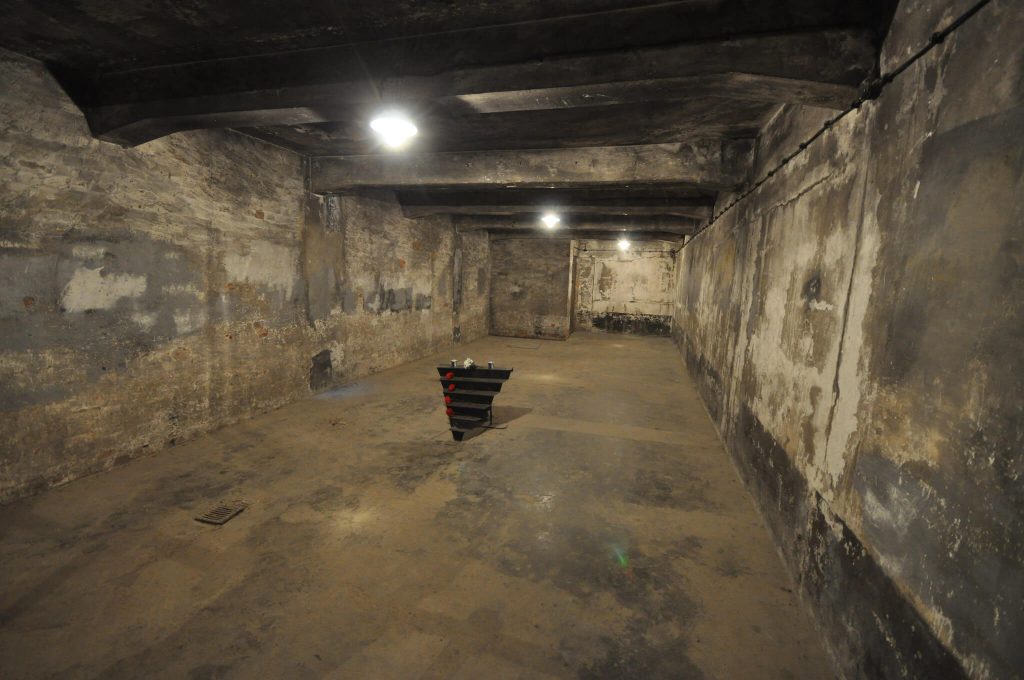
Detainees considered unfit for work (young children, elderly, and pregnant women) were told to take showers, which were really the gas chambers disguised as bathrooms. The prisoners were exposed to Zyklon- B poison gas. Those deemed unfit to work were never registered as Auschwitz inmates, and it’s impossible to calculate the number of lives lost in the camp.
For those prisoners who initially escaped the gas chambers, an undetermined number died from overwork, disease, insufficient nutrition or the daily struggle for survival in brutal living conditions. Arbitrary executions, torture and retribution happened daily in front of other prisoners (History.com Editors, 2021).
Now, these basic facts can be researched in a history book, but in order to truly understand what took place, it is best to hear it from the people who lived through it. In the article Auschwitz Survivors Recall Harrowing and Heroic Moments From the Death Camps, three survivors describe their experiences in Auschwitz from beginning to end. It lays out different quotes from the three survivors, and instead of giving you everything, I’ll give you the most significant.
“We were [in the ghetto] for six weeks under terrible sanitation conditions. We were freezing, we had very little food to eat. On day the train arrived… they pushed into one cattle car as many people as they possibly can – so that we were crushed like sardines. There [were] no windows on to cattle car. When the sliding doors slammed closed on us, the only light came through the wooden cracks” (Billy Harvey, n.p.).
“They marched us into the showers to be deloused. Our heads shaven and then we were going in to be tattooed with a number, and from then on, we had no name, that was it. For young girls like ourselves, possibly even our mother [hadn’t seen] us undressed. We had to sit there naked for men shaving our heads” (Mindu Hornick, n.p.).
“They were burning- burning between 12,000 and 13,000 people a day. Who they wanted to stay alive went to the right; who was condemned to die, go to the left. Most of the children were bitterly crying, didn’t want to be separated from their mother, so the young mothers went to the left, to the gas chambers. We were stripped from every inch of human dignity… We passed by where the [women were]… my mother, my aunt, my cousins and all their children were all naked as we glanced in, and they looked like they were in a trance. [The Nazis] must have used a gas, a small amount, because they didn’t look normal. We weren’t allowed to say a word… we’d be murdered immediately” (Billy Harvey, n.p.)
“Once a day you got a bowl of soup- they called it soup. I don’t know what it was, it wasn’t fit for an animal. No utensils. Five of six people have to share it, we handed it [from] mouth to mouth, back and forth until the soup disappeared” (Billy Harvey, n.p.)
“… you couldn’t fight because if you touched the guard you were shot- right in front of me I saw that. You couldn’t flee because if you touched the barbed wires, you were electrocuted. When we took a shower, we didn’t know whether the gas is coming out of the water. I constantly was hallucinating about food. I danced for Doctor Mengele and he gave me a piece of bread. I shared it with everyone. We were a family of inmates, we had to care for each other. If you were just for the me, me, me, you never made it. [Later, during one of several death marches] when you stopped you were shot right away, and I was about to stop. I was getting weaker and weaker, and the girls that I shared the bread with…formed a chair with their arms, and they carried me so I wouldn’t die” (Edith Eger, n.p.).
Reading these testimonies, it made be realize just how crucial it is to understand what these survivors endured, because without the knowledge of their history, we can never be culturally aware and make any attempts at preventing this from happening again. Boyne’s purpose of creating this novel was highlighting the complacency that people have had in terms of events like this. The reason that the Holocaust (and other genocides) have happened is because of the complacency in people and how they have just sat by and watched everything happen. During this time, civilians felt they did not have any power to stop what was being done to themselves and those around them, so the tragedy just unfolded and was unable too be stopped once things went to far.
Bruno
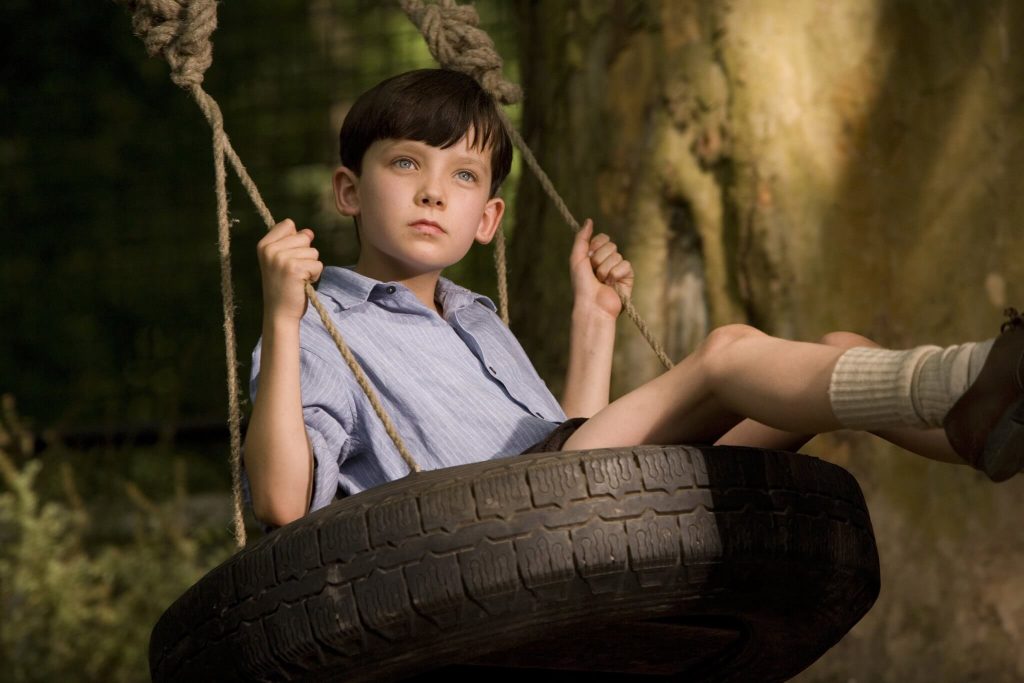
Bruno is the main character in the book. He is a young German boy whose father, a high-ranking Nazi, takes a new job meaning the family has to move to a new place. Bruno is nine years old and seems unaware of the war around him, who the Jews are or even who Adolf Hitler is. As a young German boy, and the son of a senior SS officer, Bruno would have been, by law, a member of the Hitler Youth. He would have attended a German school where students regularly swore oaths to Hitler and where antisemitic propaganda infiltrated every part of the curriculum. Children were taught that the war was something to be proud of as it meant that Germany would become a great power once more.
One thing that I found interesting was the fact that this story was told through Bruno’s eyes, and he doesn’t enter the camp until the end. The main subject of this novel is the camp, but we are never actually shown the camp until the final chapter of the story. I believe that this is done to drive home his naivety in his surroundings. This was done in a strategic manner to symbolize how as readers we look at events like this in hindsight. We have some idea of what happened because we already knew about it. We expect people to know what we already know, but that is not the case. Although people were complacent about what happened in Poland, anyone that wasn’t a prisoner was unaware of the torture prisoners endured daily. While that is not an excuse, I think it would be a little unfair to assume that Bruno knew what was going on, considering he could not even pronounce the name of the camp. In the novel, Bruno repeatedly referred to Auschwitz as “Out-With”, illustrating that ignorance that a lot of people had during that time (Boyne, 24). This only reinforces the idea that this story focuses on telling a fictional story, not about telling the readers about what occurred at the camp. I understand the point behind his innocence, but if this novel were to accurately portray what citizens, especially young children went through it would make more sense for Bruno to have some knowledge about his new environment, not about what he was going through as a young boy on his side of the fence.
Shmuel
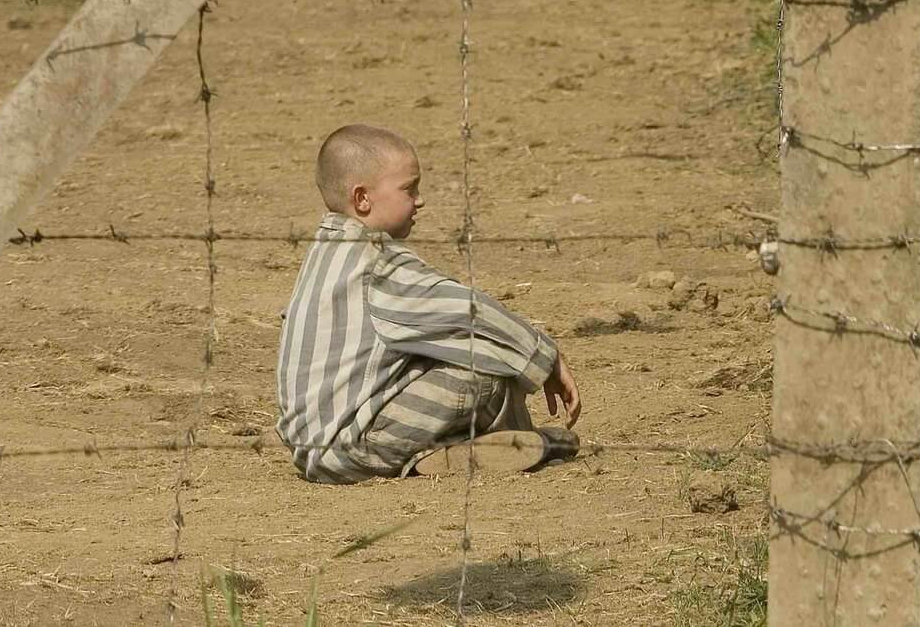
Shmuel is a young Jewish boy who Bruno meets whilst exploring near his new home. The first time they meet, Shmuel is behind the barbed wire of a concentration camp. Over the course of the story the two boys create a friendship despite being separated by the fence. As an audience we learn a lot about Bruno, so he becomes a real boy in our imaginations. However, Shmuel is only ever depicted as a one-dimensional victim. Shmuel has no personality or individuality, so the audience doesn’t build an emotional connection with him. This means it is harder for the reader to empathize with Shmuel and his situation, restricting what we understand about his situation and creating a false narrative for the victims of the camp.
Shmuel’s story is also historically inaccurate. For readers it is clear that the camp is probably the Auschwitz concentration camp complex as Bruno calls it ‘Out-With’. If a young boy like Shmuel had entered Auschwitz-Birkenau then it is very likely he would have been sent straight to the gas chambers on arrival, just like the majority of children who arrived there, as the Nazis didn’t consider them useful as forced labor. A small number of children were chosen for medical experimentation but these children were kept away from the main camp. Even if Shmuel had been selected for forced labor he would not have had the opportunity to spend most of his days sitting on the outskirts of the camp. The only reason that Shmuel had the opportunity to spend his days with Bruno was so the two of them can create an emotional bond that enhances the story to illustrate that if we try to bridge the gaps between social and cultural differences, the complacency that society suffers from would be assuaged.
The Striped Pajamas
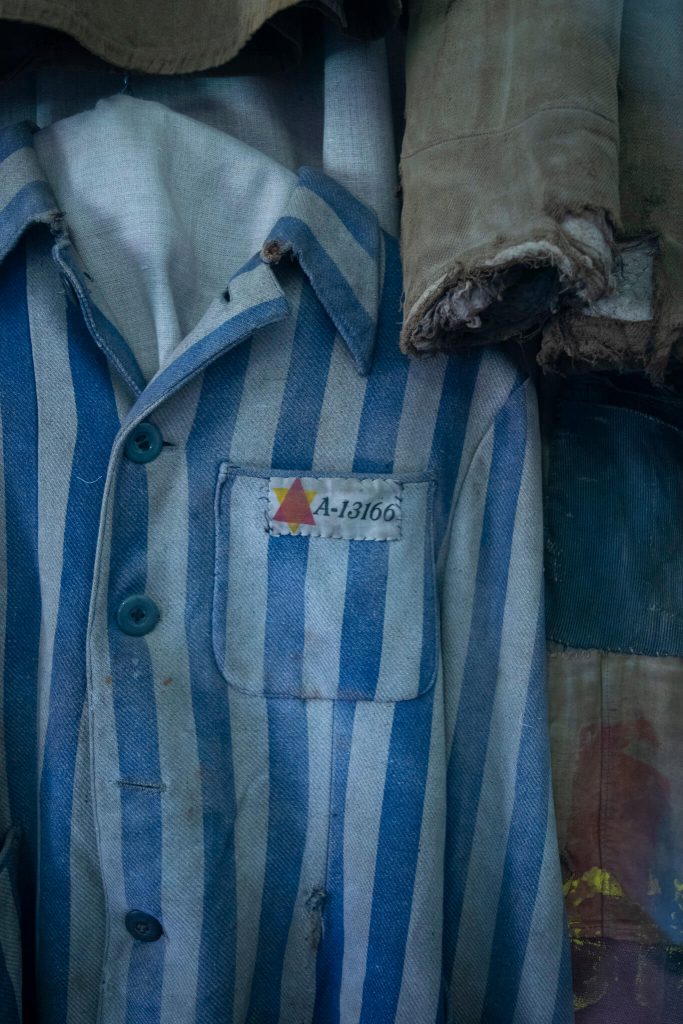
As I was reading this story, I wondered if the prisoners having to wear the pajamas was true and it certainly is. I’m not quite sure what the purpose of the color or the pattern, but I believe that it was just another way to dehumanize them as well as clump them all into the same category. This was used as an exertion of power of the prisoners to show them that they were no longer individuals, that they were all the same and they were as ugly as the pajamas themselves. In the novel, Boyne highlights the prisoner’s appearances as unhealthy they have become during their time at the camp. He writes that there were “two different types of people : either happy, laughing, shouting soldiers in their uniforms or unhappy, crying people in their striped pajamas, most of whom seemed to be staring into space as if they were actually asleep” (Boyne, 208). This distinction between the soldiers and the prisoners represent the prison bars and how they are oppressed and secluded from the rest of civilization and are forced to live like animals. These uniforms were also thin, making them inadequate for the conditions in which they were expected to work and live.
The Ending
The story’s conclusion leaves many readers upset. Bruno digs a tunnel under the wire, crawls into the camp, then he and Shmuel go looking for Shmuel’s missing father. Both boys are swept up in a group of prisoners being taken to the gas chamber, where all of them are murdered.
The emotional focus of the story is on Bruno’s family and their distress as they realize what has happened to their son. The reader’s attention remains with the experience of the concentration camp commandant and his wife whose son has been killed in what is portrayed as a tragic accident. The emotion expressed by his family is the same emotion that the prisoners felt watching their loved ones being taken from them, but this novel does not show how they would feel. We get a glimpse of this when Shmuel is worried about his missing father, but we don’t see that much distress from him. Because the focus of the story remains on Bruno’s family, the book does not engage with the main tragedy of the Holocaust: that none of the people in the gas chamber should have been there. Due to the way in which Shmuel’s character is portrayed in the novel, his character doesn’t engage the reader’s sympathy in the way that Bruno does. Shmuel represents the 1.5 million children murdered by the Nazi regime in Auschwitz-Birkenau, in the death camps of occupied Europe and in the killing fields where millions of civilians were shot into mass graves, yet the reader’s sympathy is directed towards a Nazi concentration camp commandant and his family.
Conclusion
Some educators will argue that The Boy in the Striped Pajamas helps raise awareness of the Holocaust in people who would not otherwise be interested, and there is perhaps some truth in that. However, in an educational context it is important that this book is only used as a piece of fiction and that teachers make clear to young people that it is not historically driven, but just a means of entertainment to raise awareness of the tragedies of genocide and antisemitism. This novel was written to highlight the complacency around genocides, and how they are remembered for the physical and emotional suffering that innocent people went through. It does an adequate job at recognizing what occurred at the camp, but tells more of a story for entertainment, not to help educate readers on the tragedies that took place. In order to fully understand what a person went through, it helps to know the bigger picture first. This book goes into minimal detail about what happened behind those fences, but once it does, it captures the picture quite well. While this book is a work of fiction, it highlights many of the social injustices that have occurred throughout human history. For example, there have been other genocides such as the killings in Rwanda that don’t just attack religions, but races as well. This translates into today with the Black Lives Matter movement that works to stop the unjustified murders of innocent black people. If people just stopped watching these killings happen and tried to take an effective step towards change, there would not be as many broken hearts and broken families as there are now.
Works Cited
Boyne, John. The Boy in the Striped Pajamas. David Fickling Books, 2006.
History.com Editors. “Auschwitz.” History.com, A&E Television Networks, 15 Dec. 2009, https://www.history.com/topics/world-war-ii/auschwitz.
Hollander, Sophia. “Auschwitz Survivors Recall Harrowing and Heroic Moments from the Death Camps.” History.com, A&E Television Networks, 22 Jan. 2020, https://www.history.com/news/auschwitz-holocaust-survivors-stories.